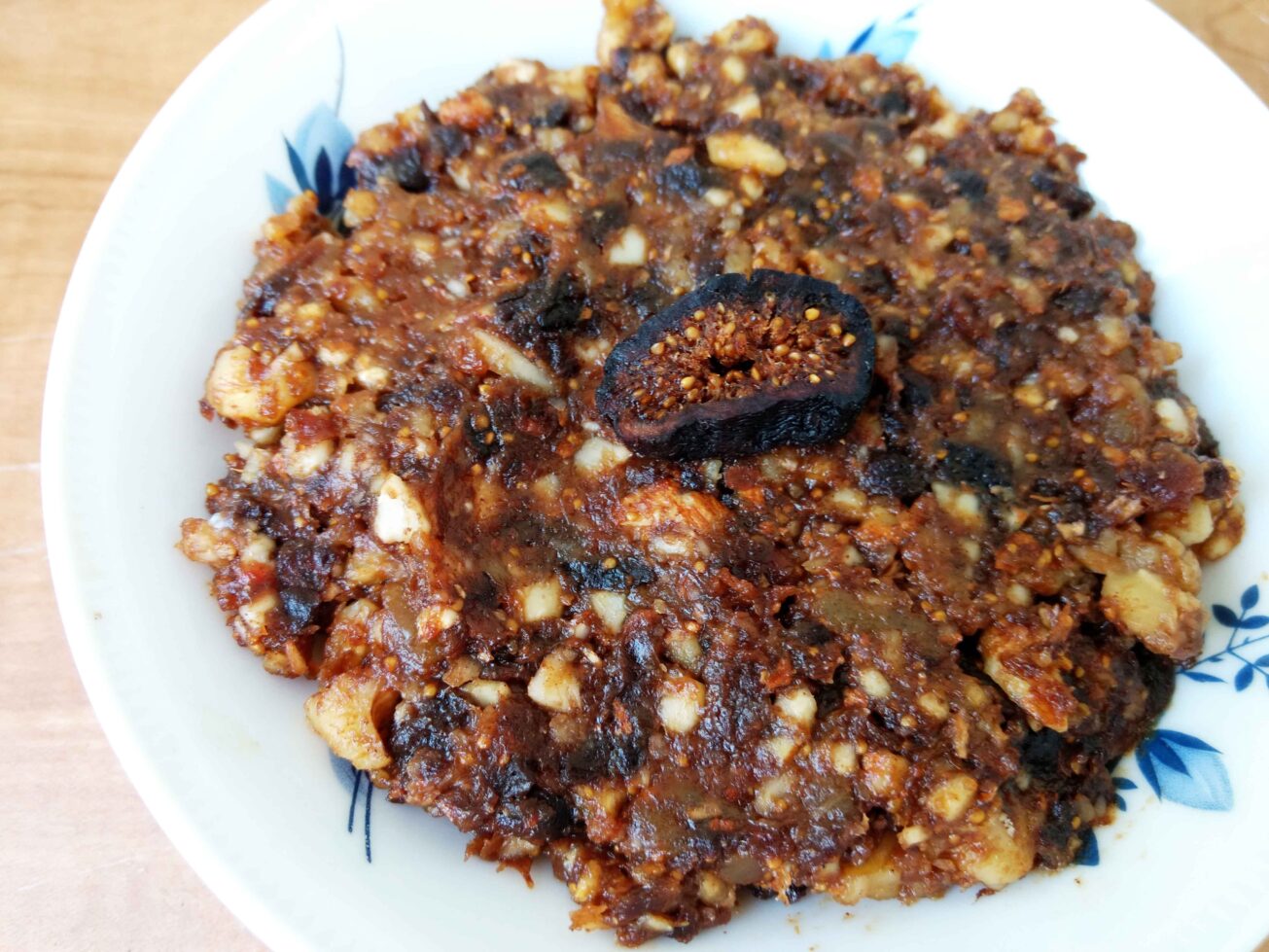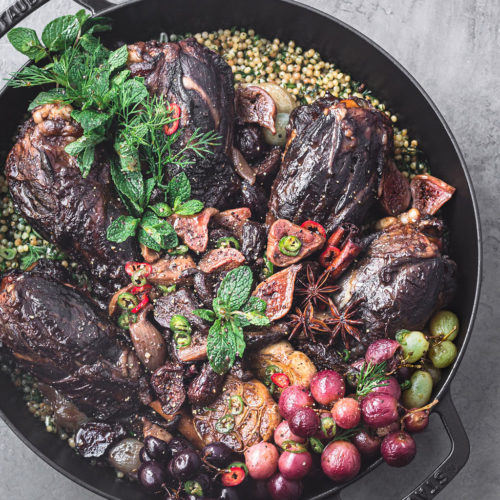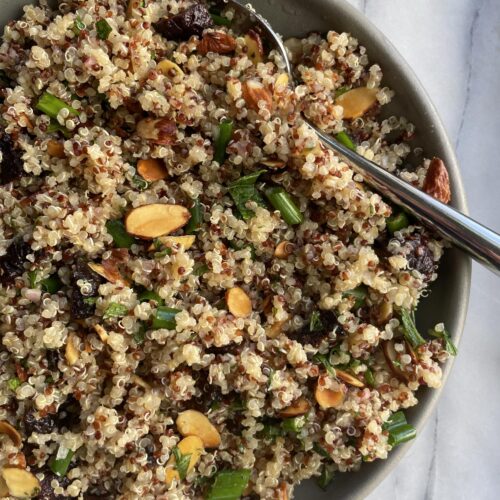Haroset, (haroseth or charoset) is a sweet blend of fruit and nuts, and the best-loved ritual food of the Passover Seder, the dinner that begins the holiday. I’m showing you how to make a Sephardic haroseth or charoset with figs.
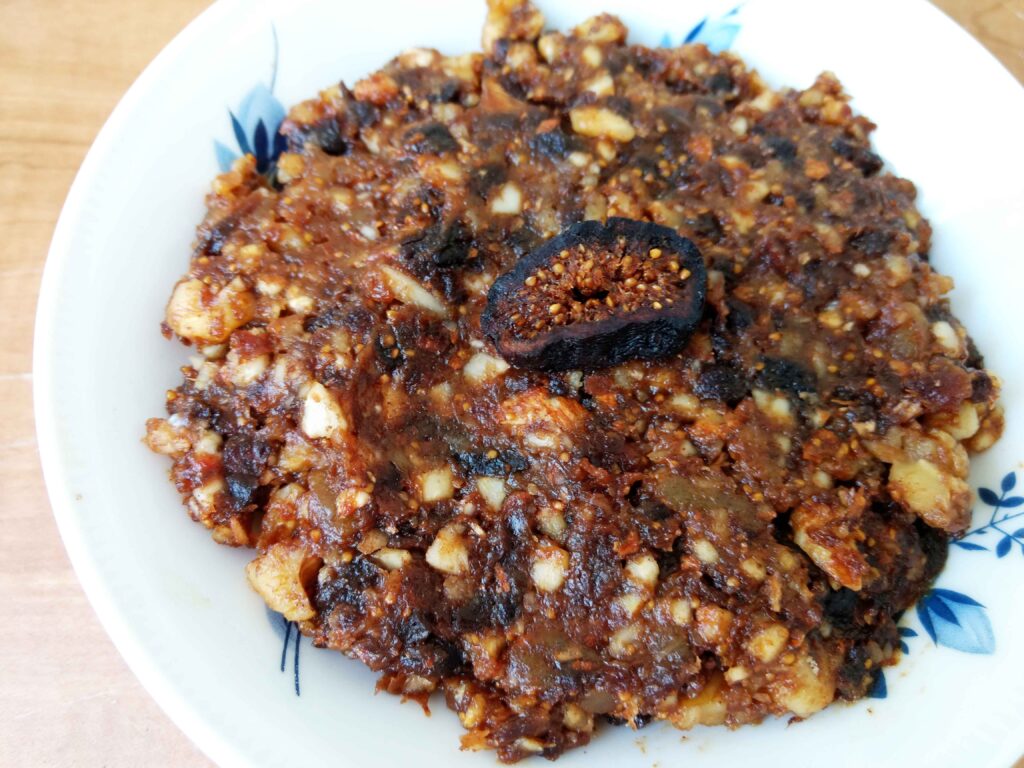
Jewish cooks around the world have developed many versions of haroset. Typical Ashkenazi haroset like the one I grew up with is a light-textured mixture of grated or chopped apples, chopped walnuts, sweet red wine and cinnamon.
I usually make Sephardic haroseth (Mediterranean and Middle Eastern Jewish), from dried fruits blended with nuts and often wine. It’s a delicious, thick spread that’s sweeter and denser than Ashkenazi haroset. Some variations are made with pomegranate juice or other fruit juices instead of wine, and some people sweeten their spread with sugar or honey.
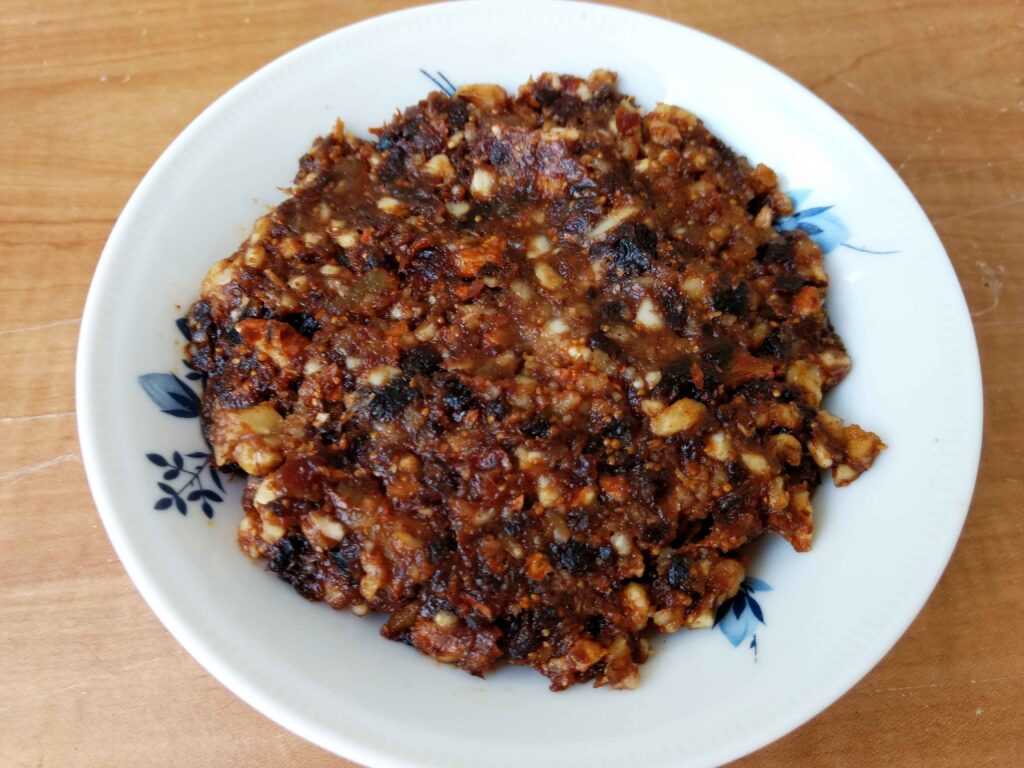
The brown color of haroseth symbolizes the mortar made by the Hebrew slaves in Egypt in the Passover story. During the Seder ceremony before the meal is served, charoset is tasted on its own, spread on matzo, and sandwiched with bitter herbs between two pieces of matzo.

There is another way to eat charoset with figs. At a Seder I attended years ago in Paris, where most of the guests were Sephardi Jews from Morocco, I was surprised to see truffle-like candies being passed around with the Seder appetizers. These “candies” turned out to be haroseth! Shaping the Sephardic haroseth in balls is a popular way to serve it in some communities. To give it a festive look, I roll the balls in shredded coconut or chopped walnuts.
Orchard Choice and Sun-Maid California Dried Figs are perfect for making charoset with figs because of their natural sweetness, so there’s no need to add sugar. They give the spread its traditional brown color and are easy to prepare, with no pits to remove. Another reason to use figs—they are one of the biblical Seven Species of the ancient Land of Israel.

My haroseth has other ingredients from this region, including dates, raisins, almonds and walnuts. I moisten it with wine, orange juice or tangerine juice. If you’re using wine, you can use either sweet or dry wine.
Serving Note for Sephardic Haroseth
Serve as haroseth truffles or as a spread for matzos or lettuce leaves.
Sephardic Haroseth | Charoset with Figs

Ingredients
- 3/4 cup almonds
- 1 1/4 cups walnuts
- 1 1/4 cups diced Orchard Choice or Sun-Maid California Dried Figs , preferably Mission (remove any stems before dicing)
- 1/2 cup diced pitted dates
- 1/4 cup diced dried apricots, peaches, or pears
- 1/4 cup dark raisins
- 1/2 cup + 1-2 TBSP sweet wine, orange juice, or tangerine juice , more if needed
- 1 1/4 teaspoons ground ginger
- 1 teaspoon ground cinnamon
- Chopped walnuts or shredded coconut for rolling or garnish, (optional)
- Dried fig slices (optional)
Instructions
- Finely chop the almonds in a food processor, leaving small chunks. Transfer to a medium bowl. Chop the walnuts in the food processor, pulsing to leave small chunks. Add to the bowl of almonds.
- Combine the dates, apricots, figs and raisins in the food processor. Add 1/3 cup wine or juice and the ginger and cinnamon. Process the mixture until it forms a slightly chunky spread, stopping occasionally to scrape it down and adding more wine or juice by tablespoons if necessary to enable the mixture to blend.
- Transfer the blended fruit to the bowl of chopped nuts and mix well. Add more wine or juice by tablespoons until the mixture is moist enough to be shaped in balls, if you like, or until the mixture has the consistency of a thick spread.
- To serve the haroset as truffles,shape small spoonfuls of it in balls and roll between your palms until smooth.Roll each one in chopped walnuts or shredded coconut and transfer to a serving plate. If you like, garnish each one with a dried fig slice.
- To serve the haroset as a spread,spoon it into a shallow serving bowl. If you like, garnish it with chopped nuts and dried fig slices.
Notes
Recipe and story by Faye Levy
Photos by Yakir Levy
Faye Levy is the author of “1,000 Jewish Recipes

